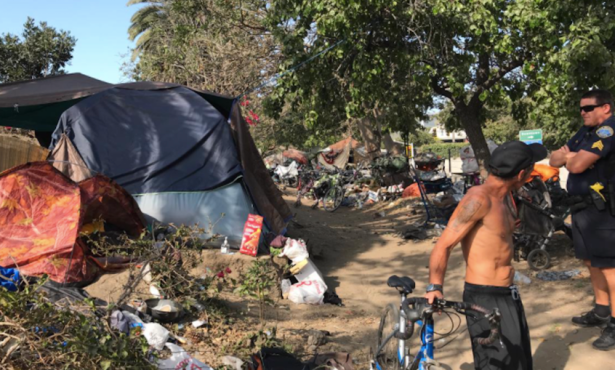Feds Rip Pipeline Company for Oil Spill
Plains All American Blasted for 'Preventable Errors' and Multiple Failures in Refugio
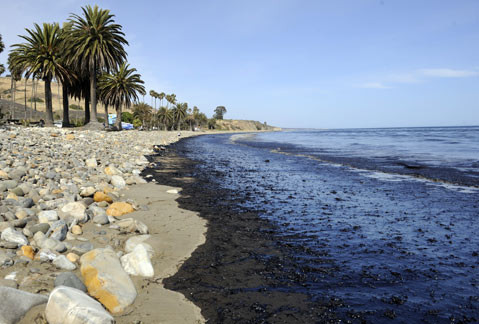
Pretty much anything that could have gone wrong when Pipeline 901 sprang a leak along the mountain side of the freeway along the Gaviota Coast last May did so — giving rise to the Refugio Oil Spill — according to a report just issued by the federal regulatory agency responsible for pipeline safety. Therese Marie Dominguez, administrator for the Pipeline and Hazardous Materials Safety Administration (PHMSA) said the immediate cause of the leak and spill — most recently calibrated at 123,000 gallons — was external corrosion, but the blame, she made emphatically clear during a Thursday morning telephonic news conference — lay squarely with Plains All American Pipeline company. Plains All American, she stated, repeatedly failed to take the necessary steps to understand how severely corroded the pipeline had become, ignoring federally required testing procedures that would have alerted them to the pipeline’s vulnerability. Almost as startling, Dominguez stated, the pipeline company failed to make any provision for the presence of a culvert capable of carrying spilled crude from the ruptured pipeline under the freeway, across the railroad tracks, down to the beach, and out to the ocean. And that’s exactly what happened because the leak happened to spring about 100 yards away from the culvert in question.
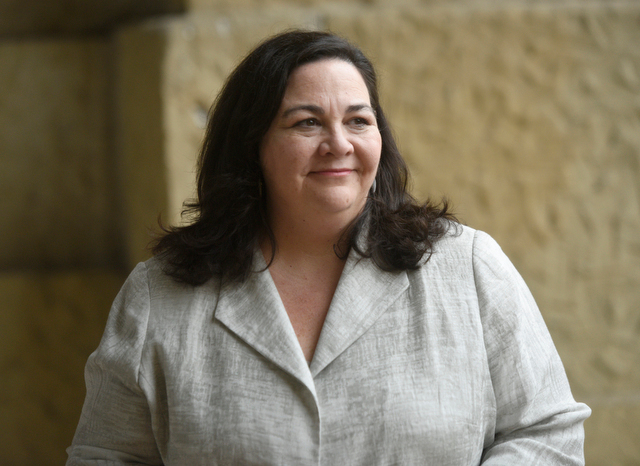
The final report, Dominguez stated, “reveals that the operator failed on multiple levels to prevent, detect, and respond to this incident.” Dominguez declined to say whether criminal charges would be filed or how large the potential fines could be. But she noted the spill inflicted significant damage on Santa Barbara’s “pristine environment,” not to mention the local economy. “What happened is not acceptable,” she said. “We will hold the operator responsible for its actions.”
This was a much blunter Dominguez than the soft-spoken federal official who — standing under the courthouse arch just a few months ago — explained in the vaguest terms the findings of her agency’s investigation into the spill. The culprit back then — according to the draft report of her findings — was corrosion as well. But on Thursday — one year to the day after the spill occurred — Dominguez detailed a daisy-chain of mistakes and blunders that she claimed could have been prevented had Plains taken the basic precautions required by its federal operating permit.
This week has been predictably tough for Plains All American. The company has opted to lie low, take the PR punches, and say little. In response to the new federal report, Plains issued a press release — unsigned — announcing it would not be commenting until it had taken the time needed to fully digest the 510-page report. Repeated calls to the company’s corporate communications have been met with a well-orchestrated wall of silence.
Wednesday wasn’t much better for the company. That’s when the City of Santa Barbara announced it was filing a $2.2 million claim against the Texas-based pipeline company for loss of sales and bed tax revenues caused by the oil spill and all the bad publicity it generated for a region so heavily dependent upon the tourist dollar. And Tuesday was even worse, as California Attorney General Kamala Harris and District Attorney Joyce Dudley announced they were jointly filing 46 criminal charges against the company in response to the oil spill.
This Thursday a multitude of Santa Barbara elected officials, political candidates, and environmental activists convened at Refugio Beach to mark the anniversary of the oil spill, warning against the inevitability of future disasters. Without exception, every speaker noted such spills were “not a matter of ‘if,’ but ‘when.’” But even the most ardent critic of the petrochemical industry would have had a hard time envisioning the relentless procession of misjudgment and mistakes that gave rise to last’s year’s spill.
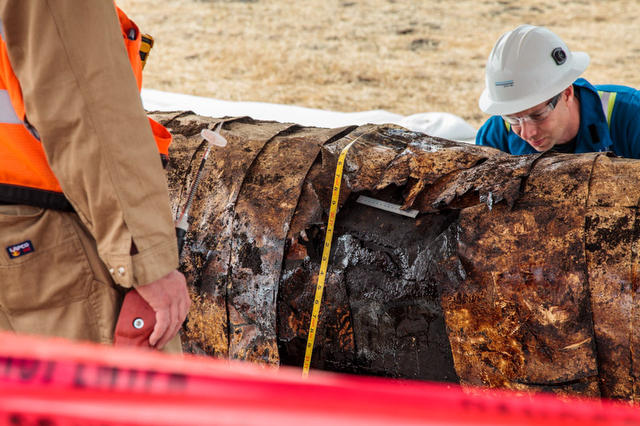
Anatomy of an Oops
Santa Barbara County fire officials began getting complaints of overwhelmingly intense oily odors near Refugio Beach at about 11:42 a.m. on May 19, 2015. At 12:15 p.m., a crew of firefighters and oil industry safety personnel then conducting emergency response drills were notified an oily sheen had been spotted on waters off the Refugio coast. At 12:55, two Plains personnel — part of the drill — opined that the spill could not have originated from their pipeline because it was located on land across Highway 101 and that there would be oil flowing across the freeway if Line 901 was leaking. By 1:27, Plains employees had confirmed that the oil spill, in fact, originated from Line 901. Only 86 minutes later did Plains employees notify the National Response Center of the spill and where it was in the water. According to federal oil pipeline safety rules, that call should have been made no later than 60 minutes of discovery.
Federal investigators ultimately concluded that the pipe had grown so badly corroded that the metal burst even though the pipeline was then operating at little more than one-half its maximum pressure capacity. The rupture itself was 12.1 inches by 7.4 inches. The metal was 89 percent corroded where the break occurred. Recent tests conducted by a third-party vendor hired by Plains All American also indicated the pipeline was corroded but only by 47 percent.
The pipeline was heated to 135 degrees because the crude was so thick and gloppy. The line was insulated; multiple methods of insulation were used. All posed a risk of liquid buildup from condensation — which causes corrosion — if not executed according to proper precautions.
Corrosion tests had been conducted on Line 901 in 2007, 2012, and 2015, the latter just days before the spill. The number of “anomalies” increased from 14 in 2007 to 94 in 2015; so too did the severity of these anomalies. When anomalies become apparent, pipeline companies are required to dig up a few pipes to determine if the actual level of corrosion matches that predicted by external measuring devices, known as “smart pigs.” Frequently, there’s a variance between the two. But when those variances became pronounced, pipeline operators are required to investigate possible reasons and to adjust their risk calculations accordingly. According to the federal report, Plains did neither.
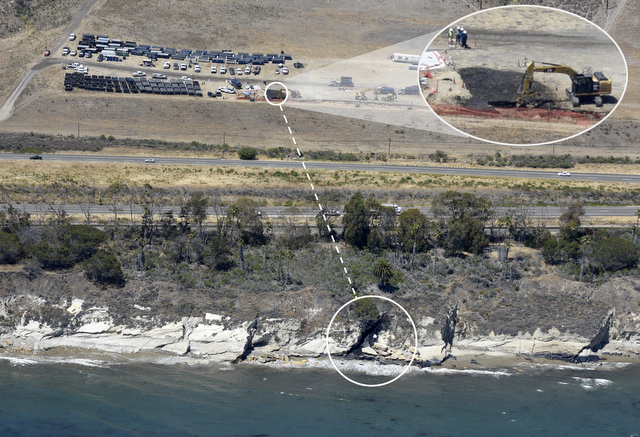
In 2012, Plains tested the stretch of pipe that burst last May, and according to the “smart pig,” the metal was 45 percent eaten through. That was enough, under federal regulations, to require Plains to dig up the pipe for inspection. In 2012, Plains did not excavate that pipe. Had it done so, the report concluded, “This analysis would provide a predicted failure time.”
When pipelines burst, the pressure readings drop. But according to the federal report, the Plains pipeline did not have the low-pressure alarms calibrated properly.
When assessing the relative risk of potential spills and devising the appropriate emergency plan, just in case, pipeline operators should have taken into account the presence of the culvert, the report concluded. “The culvert provided a quick flow path between the pipe and the Pacific Ocean, thereby allowing crude oil to flow easily towards Refugio State Beach and the ocean,” the report found. “The response plan did not have a response strategy that considered the presence of culverts.”
Complicating matters considerably, control room operators located in Midland, Texas, were charged with responding to the wildly fluctuating pressure changes on Line 901. Taking place about the same time was a pump malfunction nearby on the same line. The two events were not related. The pump problem proved persistent and commanded the attention of the control room operator. When alarms finally started sounding for what would be the rupture, he was preoccupied and shut down — “inhibited” — the alarm system. Two minutes later, the alarms were un-inhibited. The PMSHA report also found that the control room workers had not been given clear instructions in terms of shutdown procedures, and the person on duty May 19 was a fill-in worker.
Dominguez said she has the option of imposing fines or pursuing criminal charges. Neither she nor any other PHMSA representatives at the press conference could recall when — or if — PHMSA had filed criminal charges against a pipeline operator. She said that the Plains All American pipelines will remain shut down until a final corrective action plan is devised and that Plains has committed to abiding by its terms. When that will be remains uncertain. Finally, she said, her agency intends to draft a memo to all pipeline operators under federal jurisdiction summarizing what Plains did wrong in response to the Line 901 rupture and how not to repeat those mistakes.



